Hail the Chrysanthemum, a Japanese Tradition
Kiku fever has struck the United States, with shows dedicated to the chrysanthemum (in Japanese, “kiku”) in cities like Pittsburgh, New York, Buffalo, Northampton, Massachusetts, Philadelphia, and Peoria Illinois, along with Toronto, Canada. These are not the chrysanthemums you see in pots at the grocery store.
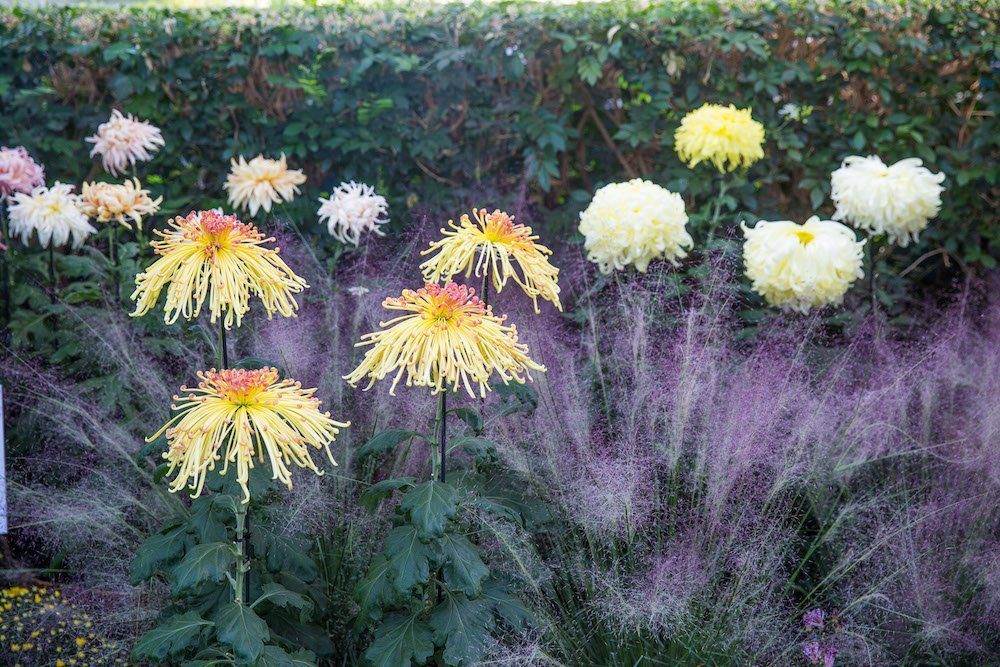
Some look like daisies. Some look like dahlias. Some look like frazzled allium or a sea urchin. There are giant mop-head chrysanthemums, and some with a “thousand” flowers growing on one stem. Some chrysanthemums are trained to grow like a waterfall. All of this bounty of chrysanthemums is spread across the country, partly thanks to sponsorship from Japanese companies.
The biggest bow-wow of all shows in the U.S., if not the oldest, is probably at the New York Botanical Garden in the Bronx. What other botanical garden provides a video showing the process by which their single-stem, 1,000-bloom chrysanthemum (Ozukuri) is tortured into perfection for their exhibits. Included have been the twisted bonsai style chrysanthemums, as well as traditional cascades of chrysanthemums and exotic species, below.
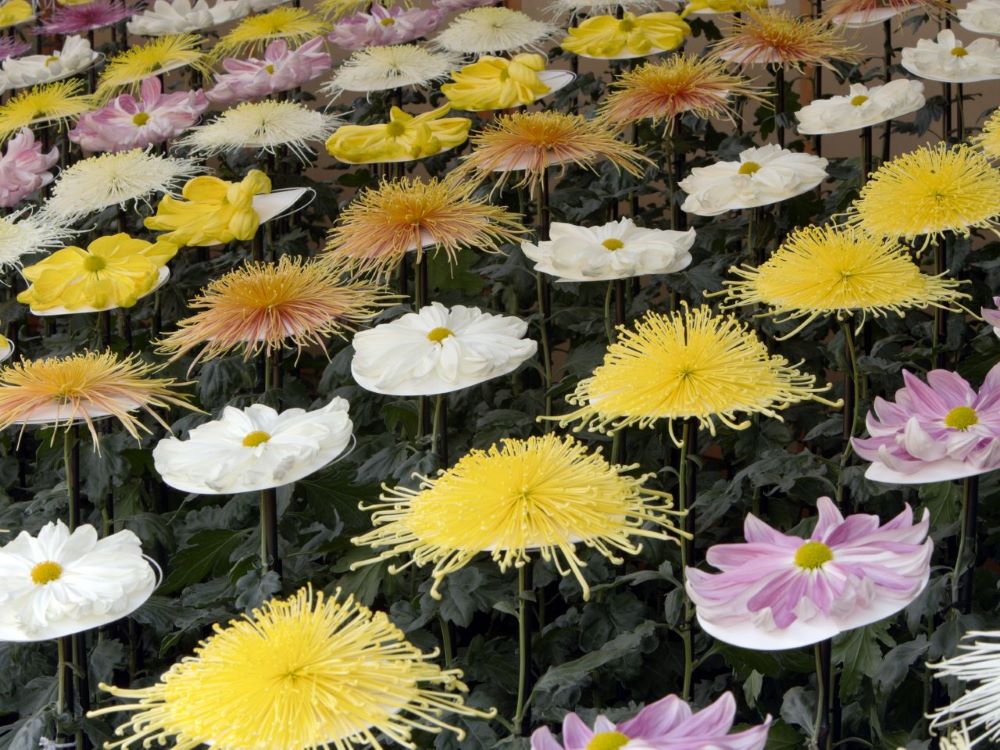
On the closing weekend at the New York Botanical Garden, 30-minute performances of Taiko drumming will take place at 1 pm and 2 pm at the Leon Levy Visitor Center. Admission to Kiku: Spotlight on Tradition is free with admission to the garden. It is sponsored by, among others, Mitsubishi. For further immersion into Japanese flower obsession, the Kitano hotel near Grand Central Station has an October exhibit of Ikebana, the subject of a Flower Power story by Jill Brooke.
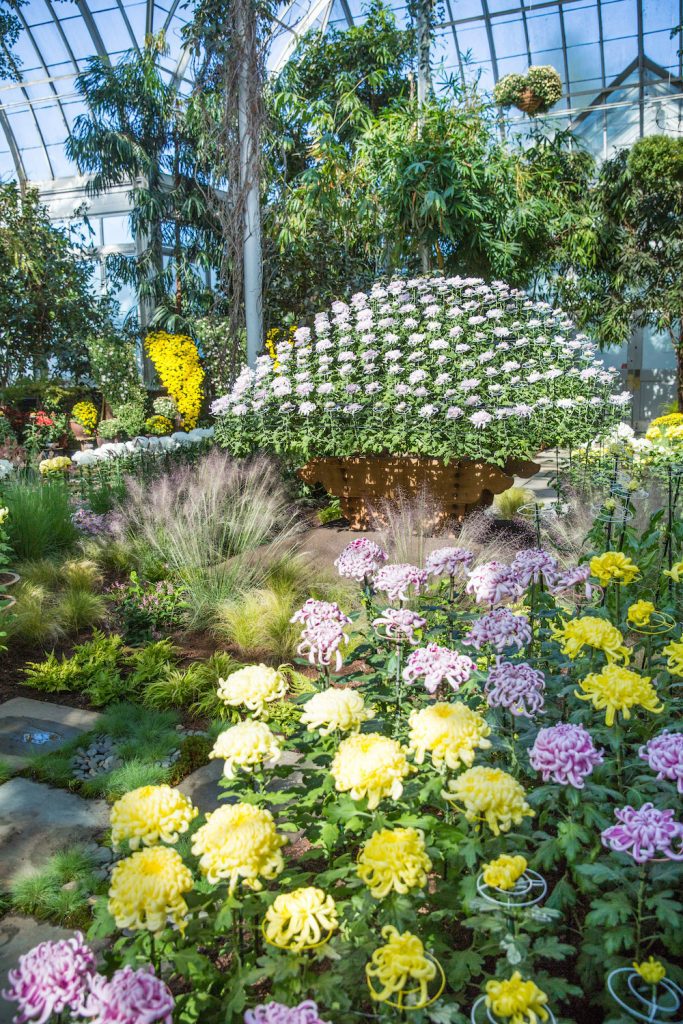
To the Japanese the chrysanthemum symbolizes royalty, longevity and rejuvenation. While most people think of cherry blossoms as a symbol of Japan, the chrysanthemum is the Imperial Family Emblem. It is on the 50 yen coin, worth about a half dollar. The symbolic chrysanthemum is stylized with 16 petals in front, and the tips of 16 petals in back, on government seals, to represent the Chrysanthemum Throne, on the front of Japanese passports, and as the highest order given by the Emperor of Japan, the Supreme Order of the Chrysanthemum.
In Japan, a white chrysanthemum is considered the proper flower for a funeral, and a red chrysanthemum is a symbol of love. But during the autumn chrysanthemum festivals in Japan, all colors are celebrated. There are two giant shows in Tokyo. The Tokyo Metropolitan Tourism Chrysanthemum event, showing 2,000 chrysanthemums, from Nov. 1 through 15, has been held every year since 1915.
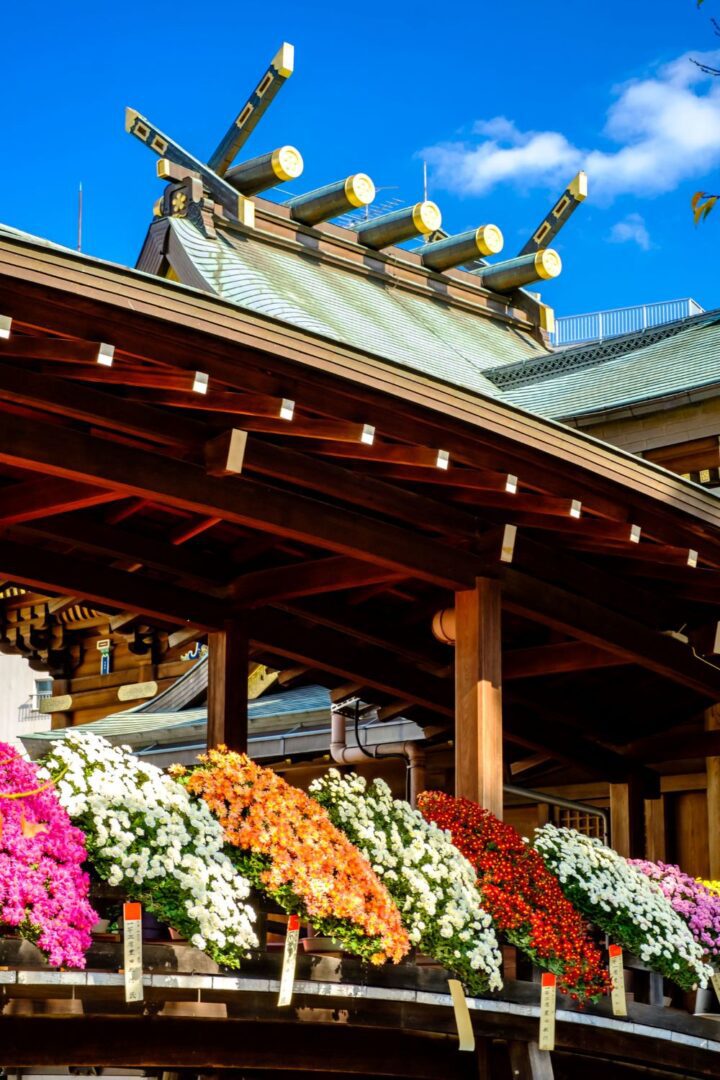
And there is the exhibit of another 2,000 chrysanthemums at the Yushima Tenjin Shrine, above, known as the home of the kami (deity) of scholars. The Yushima shrine is an ancient Confucian temple in the Bunkyo neighborhood of Tokyo. The chrysanthemum festival there runs from Nov. 1 through 23, from 6 am to 6 pm, and highlights an amazing variety of species of chrysanthemums, as well as chrysanthemum dolls, which are different every year.
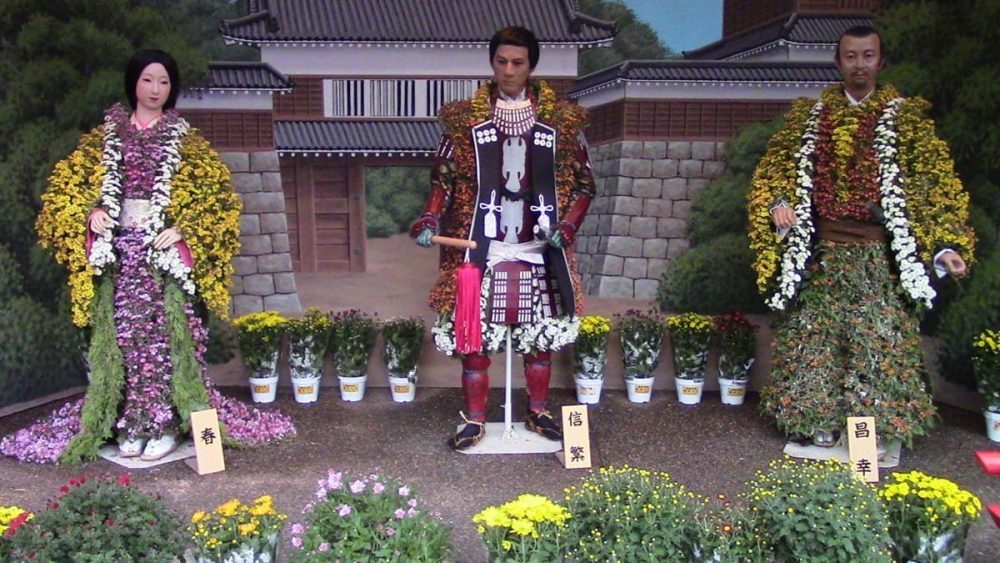
One venerable chrysanthemum show we know in the United States is at the Buffalo and Erie County Botanical Garden, from October 5 through November 3. The tradition of chrysanthemum shows there began in 1905, and some mums in the current show date back to cuttings taken from a plant grown there in 1914.
Smith College’s show might be nearly as old, dating back to the early 1900’s. All of this “mum” excitement at the turn of the century possibly had to do with the 1901 Pan American Exposition in Buffalo. The common chrysanthemum had been in the United States since Colonial times. I suspect Asian horticulturists shipped unusual species and colors of chrysanthemums to the Exposition. That would guarantee bountiful flowers for the massive show, which opened with tulips in May and closed on November 1.
At least I found this photo in the archives of the exhibition. What else would be blooming in October?
Once the show was over, Buffalo was left with a supply of exotic chrysanthemums. It already had botanists at its botanical garden and conservatory, established in 1900, who could take cuttings and begin spreading the bounty to neighboring horticulturists. I suppose it also helped that the Chrysanthemum Society of America was founded in 1900.
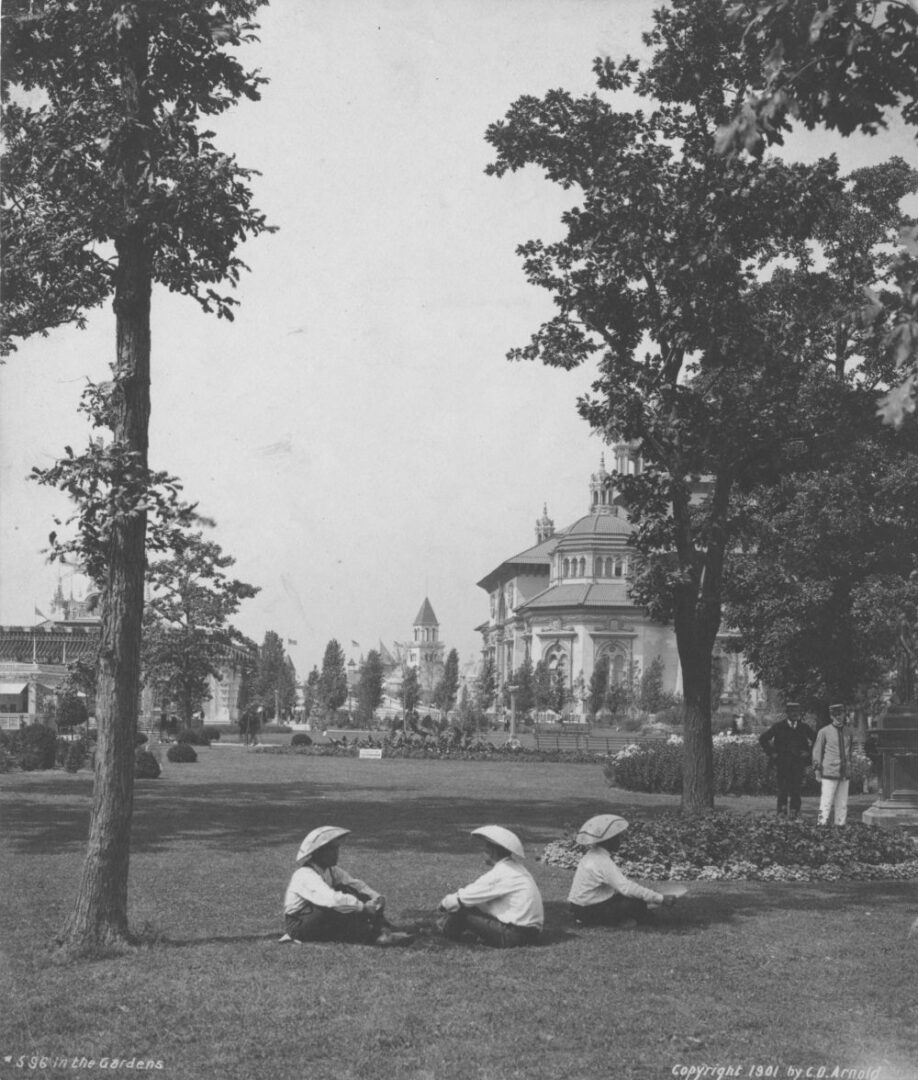
Other chrysanthemum shows take place in Orange County (November 7 and 8); at Longwood Gardens, from October 24 through November 24; at the Japanese Garden at the California State University in Long Beach for the month of October; at the Allan Gardens in Toronto, seen below, through November 9; in Peoria, Illinois, ending November 3; and at the Chicago Botanic Garden, which provides a handy mobile app listing information on the history, types, breeding and need for overwintering of the various chrysanthemums planted at various places outdoors. The Chicago exhibit lasts as long as the chrysanthemums do.
Another city that takes its chrysanthemums seriously is Pittsburgh. Through Nov. 10, the Phipps Conservatory offers the Fall Flower Show: Japanese Inspirations. And, it turns out, Phipps has been doing chrysanthemums since 1894.
In previous years, the Conservatory has hung paper cranes. This year it is paper lanterns and fish to complement the colors of the chrysanthemums below.
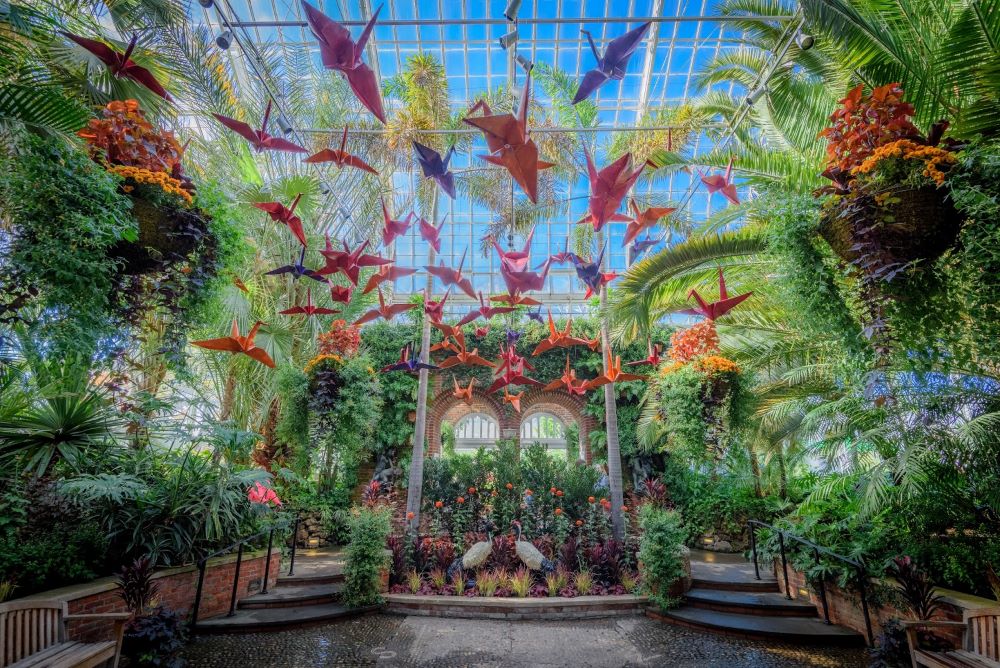
Incidentally, the Phipps Conservatory and Botanical Gardens, is named for Henry Phipps, Jr. Phipps co-founded Carnegie Steel with Andrew Carnegie. A canny investor in real estate, Phipps once owned one-third of Palm Beach and was a generous philanthropist, as was Carnegie. Although Phipps’ name is not well known in New York, it should be. His 39-room mansion and surrounding acres in Great Neck are home to Great Neck South High School, one of the highest-rated schools in the U.S. (The mansion is the administrative building.)
Back to the flower show: It has a lantern festival (floating lanterns), moon-viewing festival and a 117-foot-long, vibrantly colored “dragon,” the kind seen in Japanese parades. And a lot, a lot, of chrysanthemums. If children get bored with that, there is a hands-on rock garden.
Who has ever seen a child who didn’t want to get her hands on rocks?
Oh, and the Phipps’ miniature Garden Railroad is running, with chickens a-clucking, cows a-mooing, tractors and landscaping goats. It’s all animated, with push-button stations and miniature farm animals, so no fear of a runaway goat. Admission to the conservatory, which includes the Fall Flower Festival, is $17.95 for adults, $16.95 for seniors and students and $11.95 for children (2 – 18). Anyone not covered by those categories gets in free.
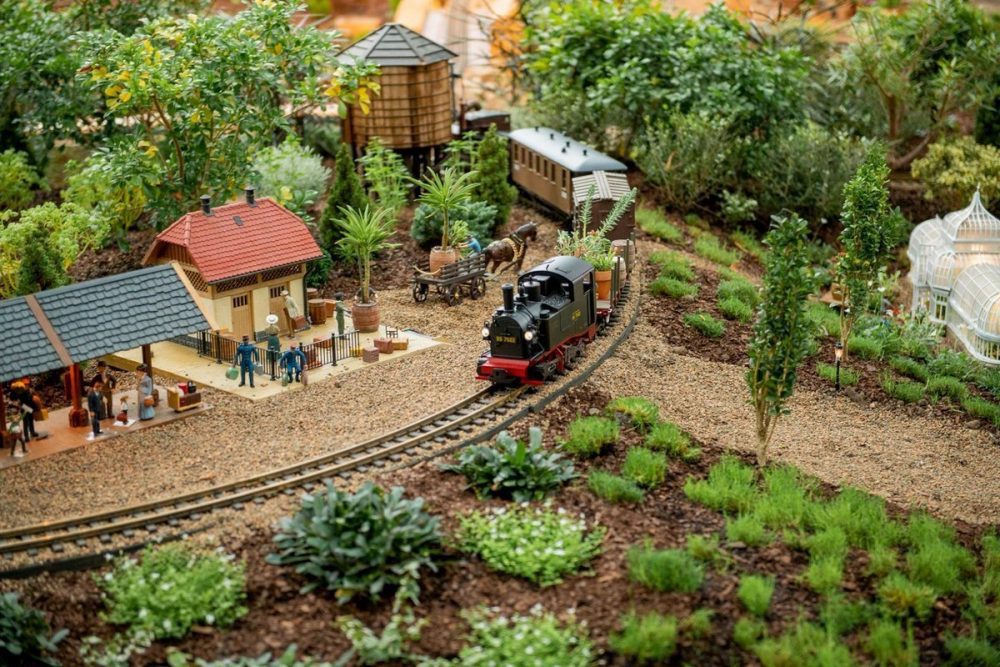
For those who can’t make it to any chrysanthemum shows, it is heartening to know that your trusty chrysanthemums out front can do much better next year. Perhaps buy a few new ones. In springtime, let them get a little bushy, then cut them back. It won’t hurt them; they will just get bushier.
Later in the year, bring along a friend and a stool. As the days get shorter, your chrysanthemums will set buds. Now you are going to disbud the terminal bud on each branch. Chat with your friend as you work your way down the row. You need to do this only once. Twice if you really want to put on a show: pinch off the end bud on the side branches.
The chrysanthemum wants to make flowers, and so it will. Lots of them.
You have started your own chrysanthemum show. You could put up a sign: Melanie’s Kiku, 2020.
by Linda Lee
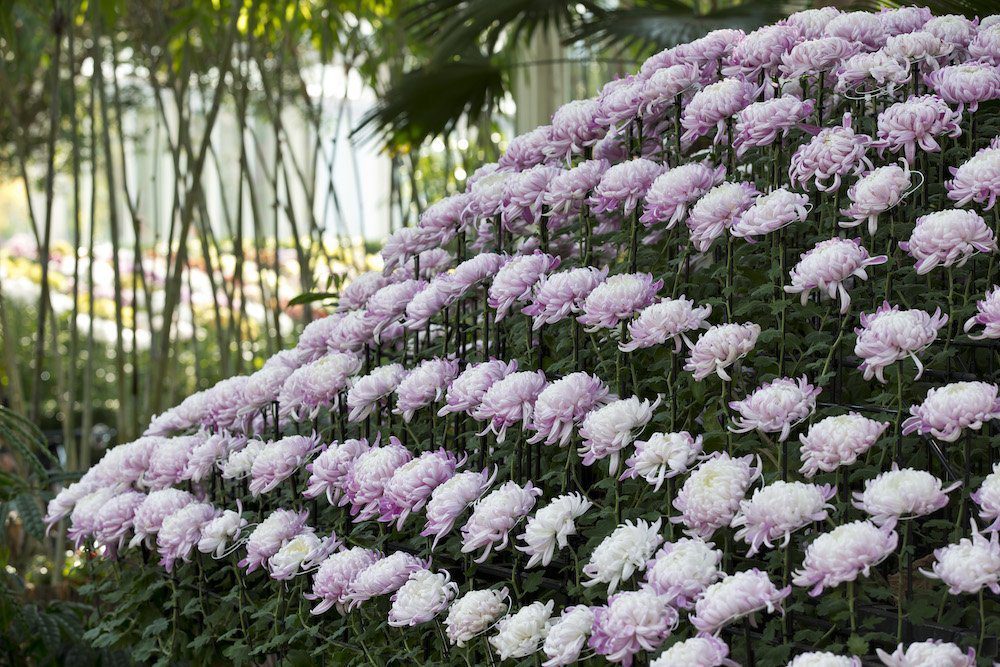
Linda Lee is a former editor at The New York Times. She was the deputy editor of the House & Home section, where she edited the garden column, among other duties. She also wrote frequently for Sunday Styles and other sections, including Dining In/Out. She is the author of six books.
